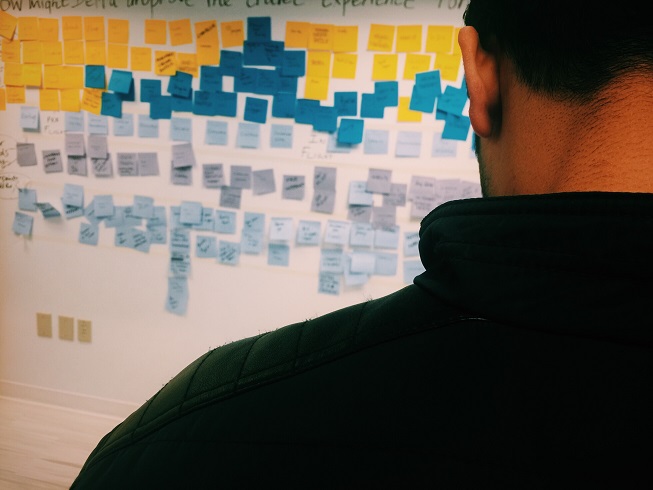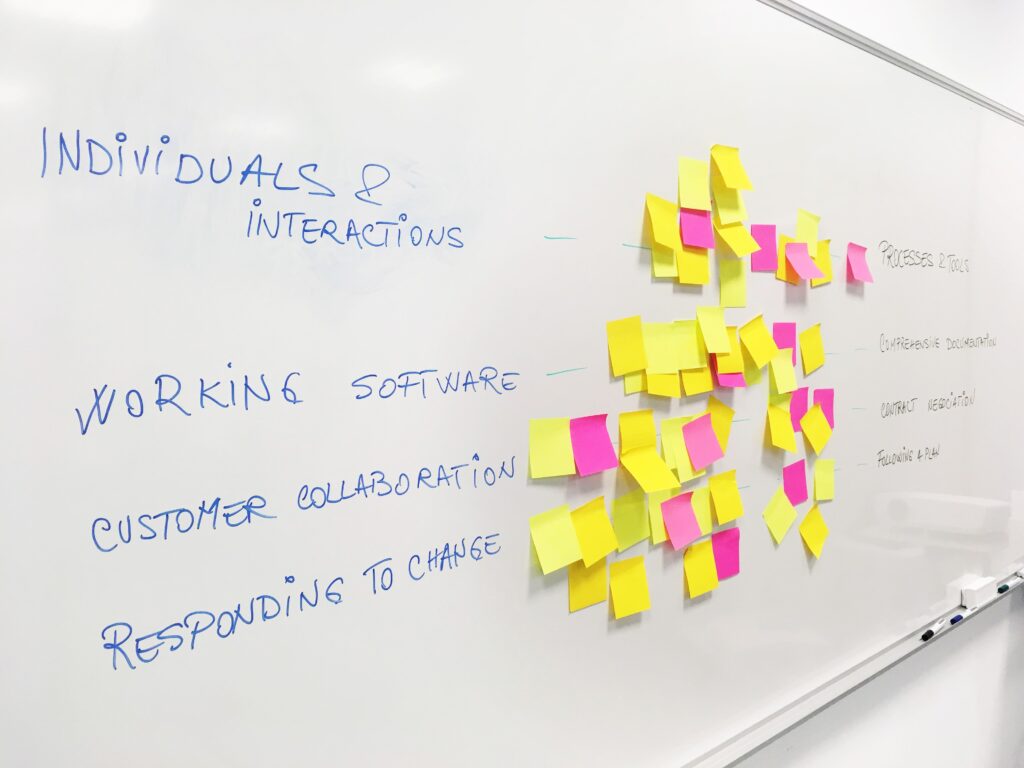Publish Date - May 16th, 2021
|Last Modified - March 7th, 2023
Everyone wants to think bigger, get things moving faster, and waste far less time in their day-to-day activities. But many individuals don’t know how to achieve these at a personal level, especially those who don’t know how to apply Agile to anything.
However, if you are familiar with Scrum or any other agile methodology like XP, Lean, Kanban or even DSDM, then you might be ahead of the game in your professional career.

Agile is not just an expression or catchword or even a set of software development principles. It provides excellent capabilities and a wide range of tools that anyone can utilize to manage personal growth, goals, and success.
If you can integrate everyday Agile for personal projects, your life will become more manageable, and you will get things done faster.
In the following paragraphs, you will discover precisely what you need to do to bring Agile to your life.
Note: If you have a general understanding of the four major concepts of Agile, this will make this article make a lot more sense.
If not, let’s review them quickly.
The Agile Manifesto consists of four key values:
- Individuals and interactions over processes and tools.
- Working software over comprehensive documentation.
- Customer collaboration over contract negotiation.
- Responding to change over following a plan.
The core fundamental of all four of these is to remain flexible and malleable while valuing things that are organic and alive.
In the next few sections, I’ll bring up real world examples of how you can make your life more Agile.
Breaking Big Projects into Chunks and Delivering Value Each Time (Deliver Value Frequently)
Big tasks usually seem impossible to accomplish and can even make you feel like you are not in control of your work schedule. These negative emotions can hinder your ability to focus or concentrate on making progress.
The truth is, the function of the human brain is limited. It can’t process tons of information simultaneously or hold unlimited amounts of data/information. It handles information overload poorly, and when faced with a daunting task, you may overthink, panic, and not deliver.
The best way out is by breaking big projects into chunks. Then, work on each piece until you are sure of the value you will deliver. Breaking tasks into sizable chunks will boost your productivity and make you provide value all the time.
A real life example of this is a recent move into a new home that I did with my partner. We had purchased a home in the center of a large city during the COVID-19 pandemic. With the chance of getting infected with COVID-19 and the looming anxiety of our moving date, my partner and I began to stress. However, I took a breath and decided to agilely break down my move.
Value: I designated value as stress free official move-in day, and belongings brought into my home. I also considered packing my personal belongings as value as well (preparing them for moving). Basically, our time and sanity was our value :).
Small deliverables: I designated specific rooms items in rooms as deliverables, and my goal for each “iteration”, was to deliver value per iteration (which is move each belonging).
Time box: I knew I had 3 months before my moving day, so I created a schedule.
Key determinant: I had negotiated with my landlord that we would move out two weeks after our closing date, so that I could actually slowly move out. Here’s how the three months went.
- Month one: Everyday for the entire first month, we forced ourselves to fill and label one box.
- Month Two: We broke down larger items (desks, couches, cabinets, furniture, tables) into smaller chunks.
- We organized our belongs in the order that we would want to unpack in our new home.
The move day: What followed was a very quiet move out date from our old home, which only had us move key essentials like the bedroom furniture, the couch and a few items from the kitchen. What also helped is, while I was moving items – my partner had begun setting up our new home to make it comfortable.
Retrospective: It wouldn’t be agile if we didn’t sit down and retrospect on our overall move. While there were a LOT of positive things, there were a few negatives that we noted. So, if we ever move again, we should have a much more efficient process.
Leaving Time for Experiments (Fail-Fast and Experiment to Victory)
The rate of advancement in business and technology, as well as the speed of market change, often means your business processes can be catapulted right into uncharted territories. This movement may necessitate experimental approaches to marketing.
The “fail fast, fail often, fail cheap” adage is not a new concept. Startups have utilized this concept for several years. However, it would be best if you were careful; failing fast the right way is essential. Make time for experiments with one primary goal in mind: to experiment to victory.
Experiments will eventually steer you in the right direction and help you surmount obstacles, twists, and turns. As you experiment, you learn very quickly from the results, enabling you to make necessary adjustments to achieve desired goals.
Do this consistently, and you will become more knowledgeable about what works and what doesn’t. And at the end of the day, you will end up victorious.
A quick example of failing fast is trying clothes on at a store. While it may look like it’ll fit and move well with your body, you may never know until you actually try it on. Therefore, try a few clothes on and spend a little more time so that you perfect that fit. Software projects can be / are handled the same way, although they are usually more expensive :).
Celebrating Little Wins, Not Just Big Ones (Every Win Counts A Little)
A feeling of accomplishment will always wash over you when you complete any task or become victorious in any endeavour. The human brain loves that rush of dopamine that you get when you finish any task. And this can work wonders by driving your productivity so that you can focus on the next task.
Therefore, celebrate every little win, not just the big ones. Every win counts a lot in the scheme of things and helps you to stay productive and enthusiastic.
It is all about ensuring customer satisfaction. And your client will be unaware that this is just one of the two examples of how you have applied the knowledge of Agile.
As an example of this, at an organization where I functioned as the agile product manager / scrum master – I would regularly celebrate ticket milestones in the way of tickets completed. I would host virtual parties for tickets completed at 100, 250, 1500, 3000. While this metric may not seem important to anyone outside our delivery team – I made a big deal about it because it was a showcase that our team had been able to work together for a long period of time and over so many different tasks.
Overall, it helped build our esprit de corp in our team and we did become a small tight knit unit. As a leader, you’d be surprised what people remember and what they don’t. Never take your team for granted and celebrate those small wins.
Always Look to Optimize Your Workflow (Kaizen)
Kaizen is a Japanese term usually thrown around when discussions improving production processes are ongoing. It translates into ‘change for the better’ or, more often interpreted as ‘continuous improvement.’ It is a philosophy that focuses on constantly looking for ways to optimize or improve your workflow.
Kaizen is a culture of continuous improvement that you should consider adopting as a person or organization. Always look for ways to do internal practices and processes better and faster without sacrificing quality or value.
The concept of Kaizen is a fantastic concept and a great one to have when approaching any task or project more than once. I believe that productive people practice Kaizen on an everyday basis all the time.
For example, when you’re cleaning your home and you realize there are more efficient ways to do that like moving all the furniture into one spot before you clean, or cleaning top down from all your appliances then vacuuming up the ground after – all of these can save time and energy! That’s what the purpose of Kaizen is, to make small iterative improvements to your process to save time and money
Always Retrospect After A Major Achievement, Failure And At Regular Intervals
After every major achievement or failure, you should self-reflect or evaluate everything. Always review your progress against your goals at regular intervals. Compare the progress you are making against the progress that you should be making.
If you don’t get feedback, it is practically impossible to improve. There is no way you can even know if any changes you implement are improving the situation. Introducing feedback loops into your life sounds great, but you should also create enough time for personal reflection. Reflect on how you think you should be doing or handling things.
At the end of the day, this is what it means to be agile. If you’re not reflecting on things you’ve done, things you could have done better and things that you did well – you’re not encapsulating the core agile concepts, and you are more “doing agile” instead of “being agile”.
Conclusion
These are just a handful of the major principles of Agile methodologies that you can apply in your day-to-day life. When you train your mind to become more agile, you are automatically training it to be even more flexible.
If you look at some of the organizations making waves today, you will see several Agile examples they practice every day. These are the principles they follow daily, and the world can see the outstanding results they produce. If you want a boost your skill in Agile, or have something that can showcase to recruiters and employers your Agile skill, consider getting the PMI-ACP certification from the project management institute.
I hope my real life Agile examples can bring Agile to your everyday life, and the remarkable changes it will bring to your life will be astounding.
Do you have any personal experience leveraging Agile? Please, feel free to share your thoughts.
